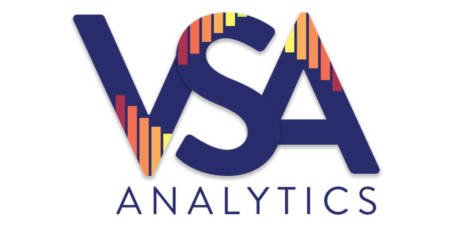According to the American Institutes for Research (AIR), “using data in instructional decisions can lead to improved student performance.” With an abundance of big data spanning the entire educational landscape, more and more institutions are taking this advice and using student data to improve teaching and learning outcomes.
But exactly how can data make a difference? And how can schools implement a data-driven culture? We explain below.
5 Ways Using Student Data Can Improve Student & Institutional Success
5 Steps to a Data-Driven Culture
What is Student Data?
Before you can understand the complexities of student data, you need to understand big data.
Big data refers to the large amounts of information constantly being generated and recorded. In K-12 education, the following information is part of the big data scope:
- Formative assessments, like pop quizzes
- Summative assessments, like analyses and essays
- Individual assessments, like how well students are comprehending content
And for higher education, institutions utilize big data sets including (but not limited to):
- Course completion rates
- Graduation rates
- Retention rates
- Year-over-year enrollments
The value of big data for educational purposes lies in its ability to be thoroughly analyzed and used to make strategic decisions. Specifically, the plethora of data can be examined to answer questions like:
- Which cohorts are more likely to struggle?
- Is it more cost effective to have part-time or full-time faculty members?
- Could department budgets benefit from reassessing curriculum?
5 Ways Using Student Data Can Improve Student & Institutional Success
1. Forecast Student Success Rates to Raise Admission ROI
In higher education, you need to understand the students who are entering your institution before you start using their data to improve teaching and learning practices.
Academic analytics can show you the candidates most likely to succeed and most likely to struggle. For example, a student who is hoping to major in engineering but has poor math SAT scores, a low high school GPA and below-average grades in math may not be prepared to succeed in the program. From there, you can make a judgement call before they are accepted.
California community colleges are a prime example of this. Under legislation known as AB 705, standardized tests are no longer the deciding factor for course placement. Instead, colleges place more importance on students’ high school performance.
2. Support Students Who May Be Struggling
Data helps you take action before a student starts to struggle. Placing a student on academic probation should only be the last resort, since it doesn’t set them up with an improvement plan. Data, however, can be used to get students back on the right path.
North Carolina State University professor Stephen Porter has seen this firsthand. “With the right data and software program, institutions can set up an alert system that notifies a student’s advisor if they are failing their classes,” he said. “The advisor can then intervene and try to find a solution, which is a much more proactive approach compared to just letting a student fall through the cracks.”
Maybe the student just needs a tutoring session to catch up. Or it could be possible that their personal life is affecting their education. Whatever the circumstances, their advisor can assess and come up with a solution to help the student get back on track.
3. Evolve Curriculum to Match Student Demands & Needs
During the program review process, course offerings should be assessed by taking a good hard look at data. If enrollments for German language classes have been dwindling for three straight semesters, it might be time to cancel the program and reallocate resources toward more high-demand courses.
Online courses are almost always in high demand, and whether or not an institution offers these types of classes is sometimes a deal breaker. If enrollments are down, it might be time to expand your online offerings. Look at your data first to identify on-campus courses that have low enrollments or low success rates. Could these classes better serve students if they were offered online?
4. Evaluate Instructor Performance to Identify Student Success Opportunities
How do your professors contribute to the overall success of your institution? Whether they are part-time or full-time faculty members, they have a significant impact on your students’ success rates, retention rates and graduation rates.
A tough professor can develop a reputation, which can lead to low enrollments in their classes and low productivity numbers for the institution as a whole. While it can be a complex process, using data to understand your instructors’ performances will put your institution in a better position to help students succeed.
5. Optimize Resources for Better Efficiency
Sections of classes that are half-full or have waiting lists a mile long are all too common in colleges and universities. Not only can these inefficiencies exhaust a school’s resources, they can also put students at a disadvantage.
Looking at your data, you can get a better understanding of the demand for certain courses. It’s common that the prerequisite core education classes like math and English will need more sections, but what about the concentration-focused courses like journalism, political science or chemistry? Have enrollments for these courses been steady, or could you cut a section here and there to better utilize your resources?
Your data can also show you where you might need to expand your course offerings. If Sociology 101 always has a waitlist, adding another section could help your students satisfy their elective requirement quicker — which could get them on the path toward graduation faster.
5 Steps to a Data-Driven Culture
Now that you understand the importance and benefits of using student data to improve teaching and learning, here’s how to get started.
1. Establish a Strong Foundation
The first step is to set campus-wide, measurable performance goals. Data-driven cultures have almost too much data, and it’s easy to become overwhelmed. If you start with certain goals in mind, you’ll be more focused and can avoid getting lost in a sea of data sets.
Think about your strategic plans, institutional goals and most recent program reviews. What are you hoping to achieve? Do you need to boost enrollments by 10% within the next 2 years? If so, this would be the first place to start. Once you have a goal, you can dive into relevant data. Where are enrollments significantly declining? Where are they steady? Where are they growing? Start with these questions and you will develop the necessary context to move forward.
2. Lead by Example
If institutional leaders don’t fully embrace the value of a data-driven culture, how can anyone else on campus be expected to?
Getting support from leadership will support a culture shift. When stakeholders are invested, the process should be as transparent as possible with all employees, administrators, faculty members and even students. Whenever change occurs, it’s comforting to understand the reasons why and people are more likely to get on board.
Across campus, people may want to know the following before and during the switch to a data-driven culture:
- The reasons why a shift toward data is happening
- The timeframe for implementation
- If and how their jobs may be affected
- Who they can turn to for assistance
3. Don’t Rush into Anything
Getting everyone on board at once may not be feasible for some colleges or universities. In this instance, you can start small. Let one department roll out a data-driven process on a trial-and-error basis for a certain period of time. Depending on how it goes, you can slow roll the process to other departments.
It will be helpful to create a schedule for analyzing your data that will align with when you need it most — like before program reviews or strategic planning. Just give your teams time to comb through the data so that you will have time to digest the information and make the best possible decisions.
4. Make Data Easy to Understand
When you think of an endless amount of data, what comes to mind? Is it a long Excel spreadsheet or a giant server in your IT department?
More than anything, data needs to be accessible and easy to understand in order to be used effectively. The harder it is to use and understand, the harder it will be to get everyone on board with using it.
Make sure employees can access data whenever and wherever they need. Once it’s accessible, it should be organized and presented visually to avoid time-consuming analyses. If no one can understand the data, its purpose will quickly be lost.
5. Start Turning Data into Action
As we’ve mentioned, every institution generates and stores an exceptional amount of data which requires a robust infrastructure. One of the most convenient, secure and accessible ways to manage this information is with a data analytics platform.
Analytics solutions aggregate all institutional data into a centralized resource that can be accessed by anyone with the proper credentials. Some of the best platforms convert static numbers into visual graphs and charts, making data much easier to interpret. And through an interactive dashboard, you can easily adjust reports and drill down into information by certain variables — like demographics, programs or enrollment types.
Frequently Asked Questions
Q: Why is data collection important in higher education?
A: If it can’t be measured, it can’t be improved. Higher education data can be collected, stored, managed, analyzed and used as a catalyst to inspire significant change in any school setting. But if you don’t collect it, you can’t make improvements.
Q: Why should teachers use data to drive instruction?
A: Teachers and professors can use individual student data sets, like high school performance and test scores, to cater coursework or lesson plans to students’ needs. In higher education, this may be more of a one-on-one approach, but data will tell a teacher almost everything they need to know about a student’s educational background.
Q: How can student learning be improved?
A: Assessing student learning is the best way to make improvements. If a professor who only gives lectures is noticing that students aren’t comprehending the material — through poor test scores or general disinterest in class — they can try catering to different learning styles. For example, most of the students may not be auditory learners, and could require more visual instruction.


